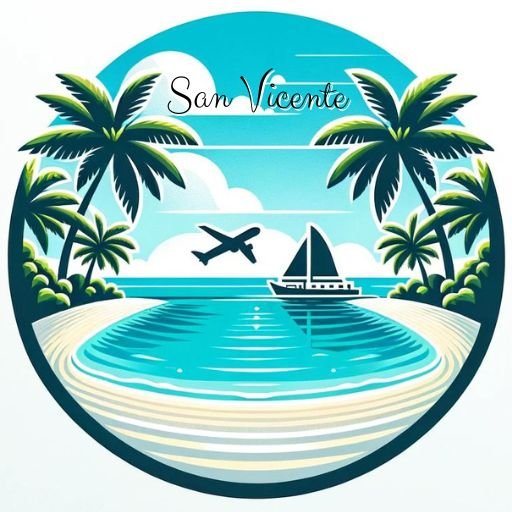Alimanguan: A Barangay Enriched by History and Natural Abundance in San Vicente, Palawan
In the idyllic province of Palawan, the Philippines, nestled amidst lush greenery and azure waters, lies a unique barangay (the smallest administrative division in the Philippines) known as Alimanguan. Deriving its name from the word “alimango,” a native term which refers to a species of crustaceans – crabs – that populate the local “katunggan” or mangroves, Alimanguan has long been associated with its abundant crab population.
According to local lore, the area was once so rich with these crustaceans that they could often be seen crawling in the streets. This unique characteristic of Alimanguan captured the imagination of its earliest settlers – four Tagbanua families – Rodriguez, Martinez, Talibod, and Francisco, who decided to adopt the name Alimanguan for their settlement.
The history of Alimanguan, however, predates its crab-infested days. The barangay was originally known as “Aduas” and was a part of the municipality of Taytay. A significant transformation took place in 1931 when it was renamed Alimanguan. It was not until after World War II in 1945 that Alimanguan was officially recognized as a separate barangay. Mison Gapilango held the title of the first Teniente del barrio (Barangay Captain), succeeded by Marciano Gabin in 1946, and subsequently by Guillermo Estrada, Josefina Collado, and Floresto Abrina.
A milestone in Alimanguan’s history occurred in 1972 when the distinct municipality of San Vicente was created in the province of Palawan. During this reorganization, Alimanguan was ceded by its mother municipality, Taytay, becoming an integral part of San Vicente.
Today, Alimanguan stands as a testament to its rich history and natural abundance, welcoming both local and foreign visitors to experience the beauty of its landscapes and its vibrant community. Despite the changes over time, the unique characteristic that inspired its name – the profusion of crabs – remains an enduring symbol of this charming barangay. Alimanguan continues to be a hidden gem in San Vicente, Palawan, offering a slice of the Philippines’ natural and cultural wealth.
***
Discovering Alimanguan: A Hidden Gem in San Vicente, Palawan
Nestled in the northern reaches of San Vicente, Palawan, Alimanguan, once known as “Aduas,” is a vibrant barangay that captures the essence of Philippine rural coastal life. Its name, derived from the word “alimango” meaning crab, reflects the abundance of crabs found in the area, pointing to its rich marine biodiversity and the community’s strong connection to the sea. Alimanguan, a picturesque fishing village, is steadily emerging as a compelling destination for tourists seeking both tranquility and adventure, thanks to its strategic inclusion in Cluster 1 of the Tourism Master Plan.
Geographic and Natural Wonders
Alimanguan is situated about 15 kilometers north of Poblacion, the bustling heart of San Vicente where the local airport is located. This proximity makes Alimanguan an accessible haven, less than two hours away from El Nido. The last stretch of the 14-km Long Beach, renowned for its pristine conditions, ends here, marked by the majestic Tandol Rock Formation—a sight that captivates every visitor with its raw beauty.
The barangay is a treasure trove of natural attractions, from its expansive white-sand beaches to untamed lands, cascading waterfalls, and breathtaking vistas. Such features not only make Alimanguan a prime spot for tourism and Agri-tourism but also safeguard its potential as a cultural heritage site, especially with the development of the Alimanguan Fisherman’s Village. Here, visitors can immerse themselves in the local culture and learn about the traditional practices of the community, further enriching their travel experience.
Governance and Infrastructure
Alimanguan is steered towards growth and sustainable development. Public facilities like the Barangay Hall, Health Station, and the Child Development Center support the community’s needs, while the Tourism Infrastructure and Enterprise Zone Authority (TIEZA) oversees tourism-related enterprises, ensuring compliance with regulations to preserve Alimanguan’s natural and cultural integrity.
Essential Services and Amenities
Alimanguan is prepared to welcome visitors with its range of accommodations, from resorts and guest houses to lodging inns, ensuring a comfortable stay. Local restaurants and bars offer a taste of the area’s culinary delights, with seafood being a prominent feature on menus, reflecting the community’s fishing heritage. Although the area lacks ATMs, tourists are advised to carry enough cash to enjoy their stay without hassle. Essential services such as health care and education are accessible, with Alimanguan hosting both an elementary and a national high school.
Activities and Experiences
The barangay offers a plethora of activities, from swimming and sunbathing on Long Beach and Alimanguan Beach to surfing, trekking, and exploring the Ipanganan Waterfalls. The annual Baroto Festival and the celebration of the San Rafael Town Fiesta are cultural highlights that offer a glimpse into the local way of life. Visitors are encouraged to explore the fisherman’s village, engage in eco-friendly practices, and try local delicacies like Spanish sardines, traditional seafood, and native chicken.
Travel Tips and Reminders
Travelers to Alimanguan should be mindful of environmental conservation efforts, including paying an environmental fee and adhering to waste management practices. Essentials such as insect repellent and a water tumbler are recommended to enhance the travel experience while minimizing environmental impact. With its enchanting natural beauty, rich cultural heritage, and community-driven development, Alimanguan is not just a destination but a testament to the harmonious coexistence of nature and culture in Palawan.


